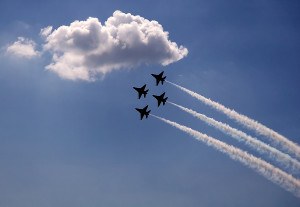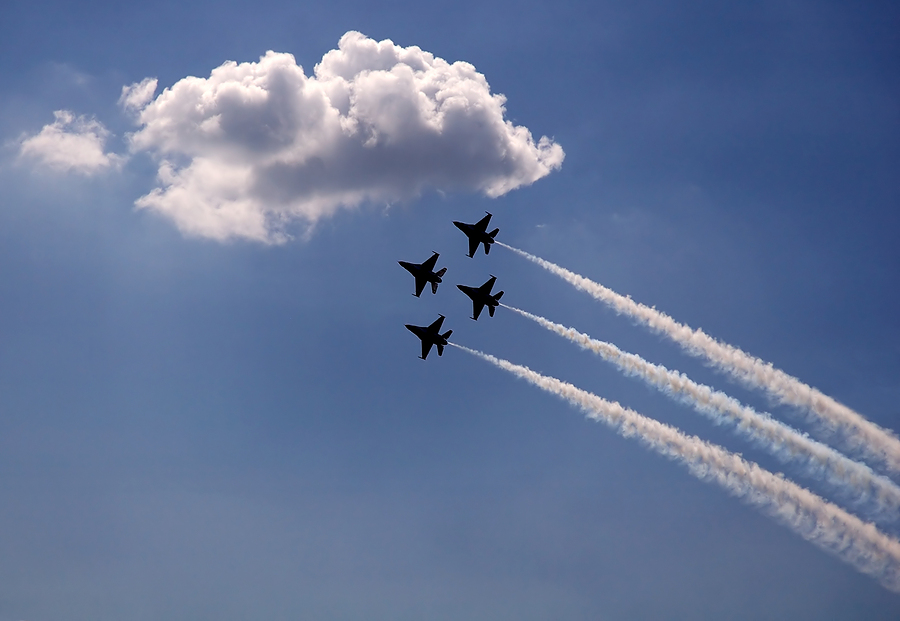Despite suffering severe injuries in the worst air race accident in the U.S. in more than a half a century, some victims have told their lawyer they would like to attend future races.
“I just look at them, shake my head and say, ‘You are absolutely nuts,”‘ said Houston attorney Tony Buzbee, who represents 16 injured victims and families of people killed at an air race in Reno, Nev., in September.
Eleven people died and about 70 more were badly injured after a souped-up World War II-era warbird crashed in front of VIP boxes, sending shrapnel into the crowd.
That some victims would still support such events and return to them underscores the powerful fascination of air shows and races, which are built around pilots and performers engaged in extreme risk-taking.
 More than 10 million people attend U.S. air shows every year. But what level of risk is acceptable for both the public and the pilots? And can safety improvements be made to reduce that risk while still permitting daredevil performances?
More than 10 million people attend U.S. air shows every year. But what level of risk is acceptable for both the public and the pilots? And can safety improvements be made to reduce that risk while still permitting daredevil performances?
The National Transportation Safety Board is holding a hearing Tuesday to help answer those questions. The hearing is separate from the board’s investigation of the Reno accident. Officials for the Reno Air Racing Association, which sponsors the races, are scheduled to testify.
Since 1986, there have been 152 air show and air race accidents in the U.S., including 75 fatal ones, according to the board. But, except for the Reno race, none involved spectator deaths.
“When it comes to spectator fatalities, their record is very good in the United States,” said the board’s head, Deborah Hersman. “But any fatalities lead us to question how we can improve.”
Industry officials draw a sharp distinction between the Reno air races and the other nearly 350 air shows held around the country each year.
The Reno races are the only ones of their type held anywhere in the world. A group of planes flies wingtip-to-wingtip as low as 50 feet off the sagebrush at speeds sometimes surpassing 500 mph. Pilots follow an oval path around pylons, with distances and speeds depending on the class of aircraft.
“We’re just like NASCAR in the sky,” said race spokeswoman Valerie Miller.
The Red Bull Air Race World Championships, the only other air race series, was canceled for this year and next year before the Reno accident. Those races are significantly different from the Reno races, with one plane at a time flying a course around pylons vying to achieve the best time.
Critics of the Reno air races contend they are more dangerous than the typical air show where aerobatic stunts are performed. Air show regulations require planes to follow a course parallel to the grandstands so that the direction and energy of the planes is never pointed directly at the crowd. In the air races, they say, there is a point, usually just before the home stretch, when planes briefly turn in the direction of spectators.
“When you think about the aircraft, in many cases highly modified aircraft, going over 500 mph 50 or 100 feet off the ground in the area of thousands of people, I think common sense would tell you, man, that sounds on its face just very dangerous,” Buzbee said. While some of his clients support continuing the races, others say they feel strongly they should be ended, he said.
Before the Reno accident, the last U.S. spectator fatalities were at an air show in 1951 in Flagler, Colo., where 20 people were killed. That accident led to significant changes in the way air shows are staged, including a requirement that grandstands are kept a distance of 500 feet to 1,500 feet from planes depending upon the aircraft.
The requirements were strengthened after 67 people were killed and another 350 injured in 1988 at a U.S. Air Force base in Ramstein, Germany, after the midair collision of an Italian Air Force team performing stunts. Wreckage from the collision landed on spectators. Planes are no longer allowed to fly over crowds at U.S. shows.
“The good news is after that accidents safeguards that were put in place have protected the audience ever since,” said John Cudahy, president of the International Council of Air Shows.
Michael Barr, an expert on aviation safety and former U.S. Air Force fighter pilot who used to help plan air shows, said the Reno accident is an exception that will probably wind up being attributed to a problem with the aircraft rather than the nature of the air races.
“When you look back at the hundreds and hundreds of air shows there are and how few fatalities there are, this one is just the 100-year flood,” he said.
Was this article valuable?
Here are more articles you may enjoy.


 AccuWeather’s 2024 White Christmas Forecast Calls for Snow in More Areas
AccuWeather’s 2024 White Christmas Forecast Calls for Snow in More Areas  New York Considers Making Property Insurers Cover Taxi Claims Losses
New York Considers Making Property Insurers Cover Taxi Claims Losses  Cargo Theft Surges as Holiday Season Approaches, Verisk Says
Cargo Theft Surges as Holiday Season Approaches, Verisk Says  Amazon Ignored Its Own Worker Safety Studies, Senate Report Says
Amazon Ignored Its Own Worker Safety Studies, Senate Report Says 